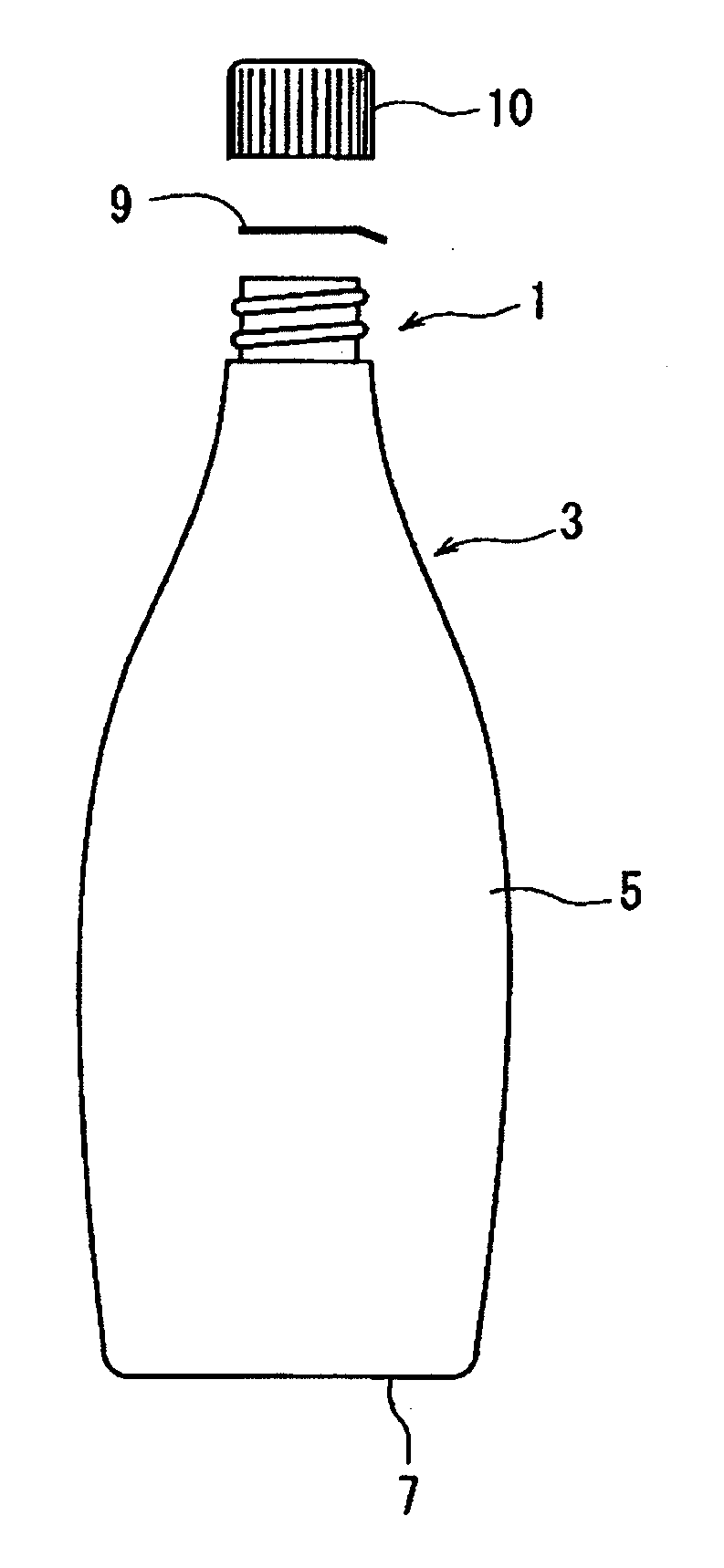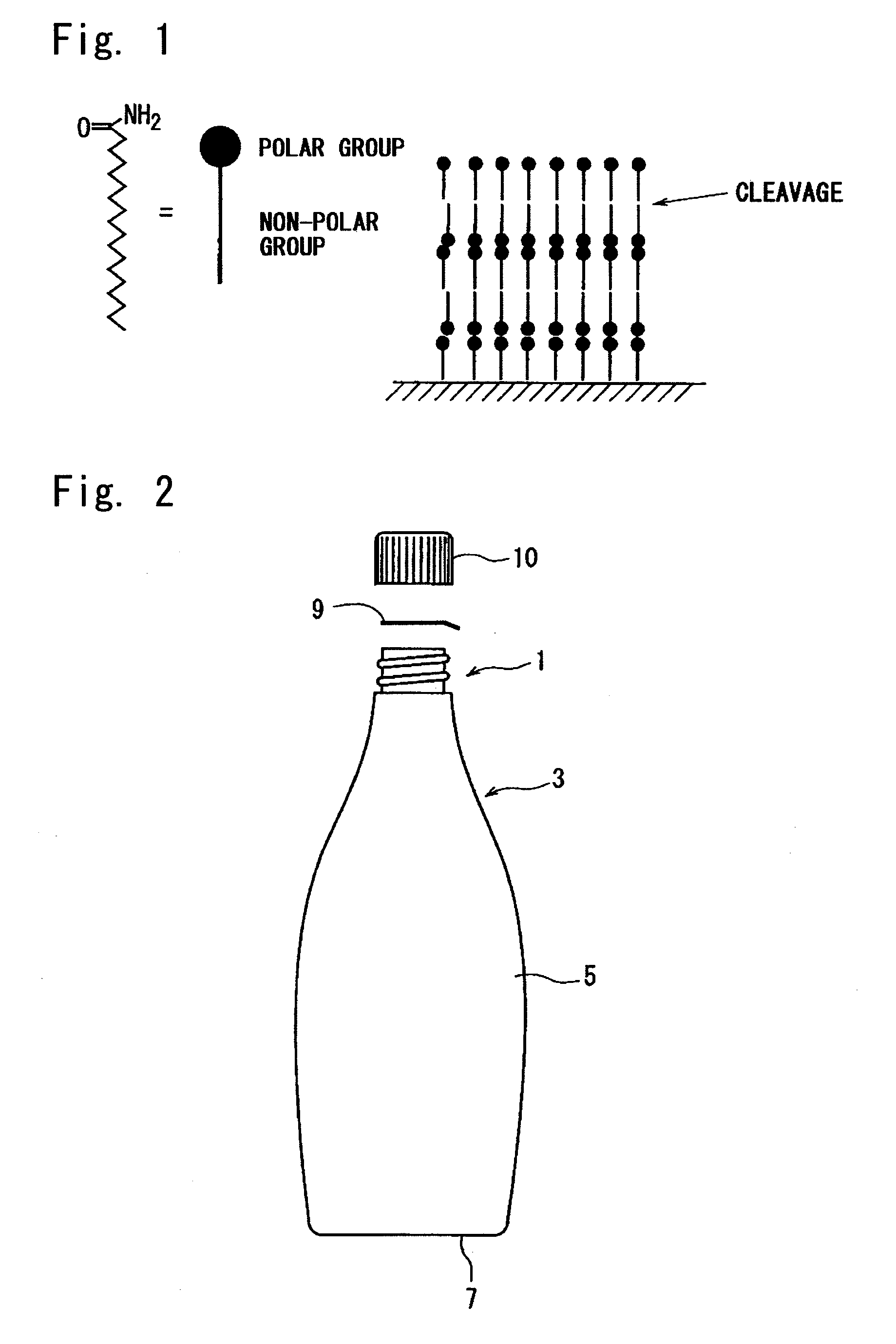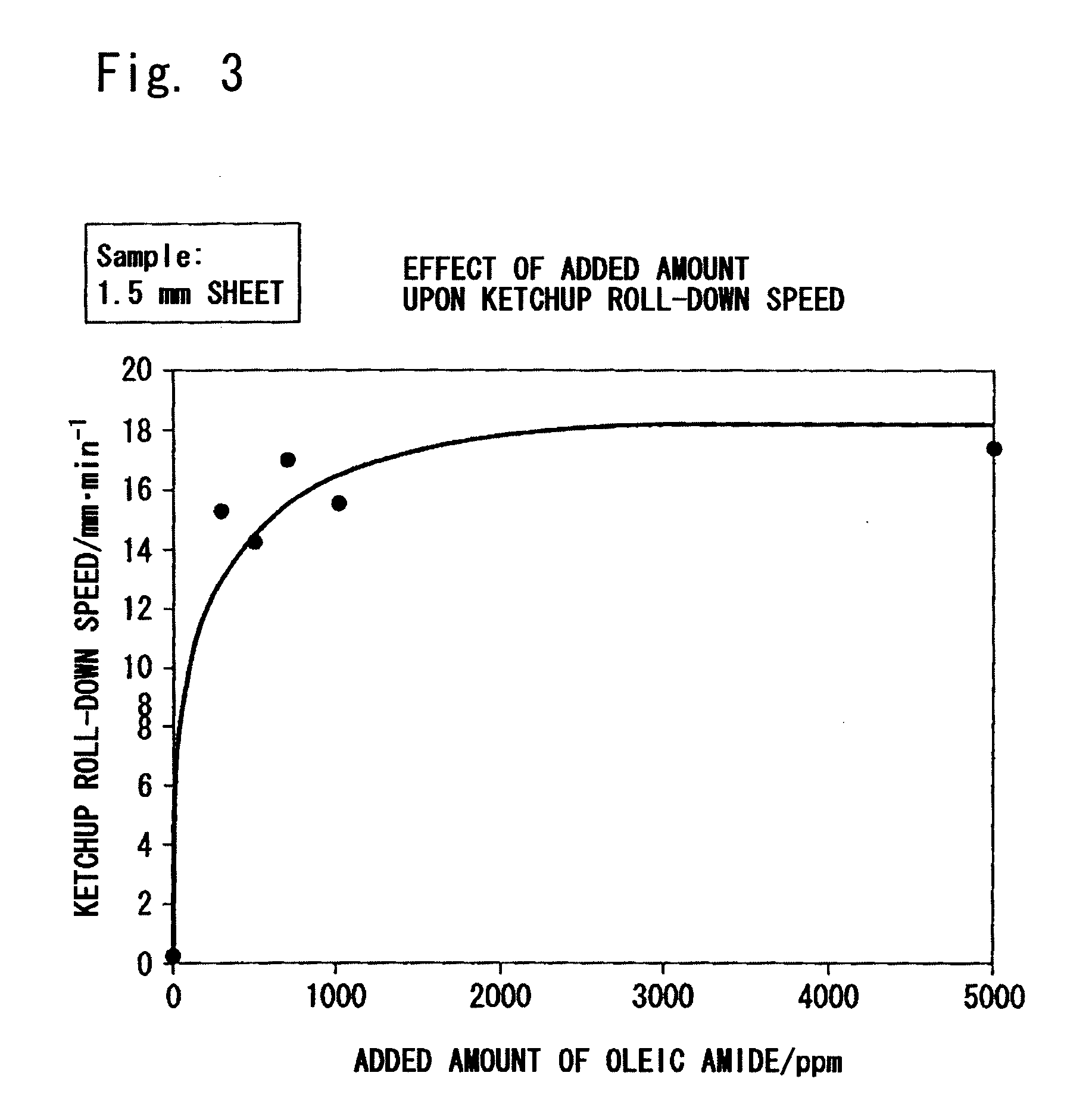Multi-layer plastic container for non-oily contents
a multi-layer, non-oily technology, applied in the direction of pliable tubular containers, packaging foodstuffs, packaged goods, etc., can solve the problem of preventing the content from adhering to the inner wall surface, and achieve the effect of excellent inverted fall-down performan
- Summary
- Abstract
- Description
- Claims
- Application Information
AI Technical Summary
Benefits of technology
Problems solved by technology
Method used
Image
Examples
examples
[0061]The present invention will now be described by way of the following Experiments.
[0062]In the following Experiments, the fall-down speed of the content was measured as described below.
[Measuring the Fall-Down Speed]
[0063]By using a polyethylene resin (low-density polyethylene, MFR=22) as a base material resin, resin compositions were prepared by blending the resin material resin with various kinds of additives according to recipes of Experiments and were injection-molded into sample substrates measuring 92 mm (long)×92 mm (wide)×1.5 mm (thick). A ketchup (viscosity at 23° C.; 1740 cps) of an amount of 70 mg was placed on ends on one side of the sample substrates which were tilted at an angle of 85 degrees so that the ketchup rolled down (temperature; 23° C.). The roll-down behaviors of the ketchup at this moment were measured through a camera, analyzed, and roll-down speeds were calculated from the plots of moving distance and time, and were used as indexes. The larger the fall...
experiment 1
[0064]Various additives were added to the polyethylene resin as shown in Table 1, and were melted and kneaded together by using a biaxial extruder. The melt-kneaded products were injection-molded to prepare sample substrates. The roll-down speeds of the ketchup were measured without subjecting the sample substrates to the thermal hysteresis. The results were as shown in Table 1.
TABLE 1BlendedRoll-downamountspeedLubricant(ppm)(mm / min)Higher fatty acidstearic acid10000.3Unsaturated aliphatic amideoleic amide100022.7erucic amide10003.9ethylenebisoleic amide10002.1Saturated aliphatic amidestearyl amide10001.9lauryl amide10001.9decyl amide10001.3Ester of higher fatty acidstearic acid cholesteryl10000.5stearic acid phenyl ester10000.6Anilidestearyl anilide10000.1Metal soapCa stearate25000.8Paraffinfluidized paraffin25000.6refined paraffin wax25000.2microcrystalline wax25000.7synthetic wax25000.4None (blank)——0.2
[0065]It will be learned from the results of Table 1 that addition of the alip...
experiment 2
[0066]Sample substrates were prepared by using the oleic amide as the additive and varying the amount of its addition per the polyethylene resin. By using the sample substrates, the roll-down speeds were measured without effecting the thermal hysteresis. FIG. 3 shows a relationship between the amount of addition and the roll-down speed.
[0067]It will be learned from the results of FIG. 3 that the roll-down speed is improved to a sufficient degree when the amount of addition is in a range of not less than 500 ppm but less than 4000 ppm. It will be, further, learned that the roll-down speed is nearly saturated when the amount of addition reaches about 3000 rpm.
PUM
| Property | Measurement | Unit |
|---|---|---|
| roll-down speed | aaaaa | aaaaa |
| roll-down speed | aaaaa | aaaaa |
| roll-down speed | aaaaa | aaaaa |
Abstract
Description
Claims
Application Information
 Login to View More
Login to View More - R&D
- Intellectual Property
- Life Sciences
- Materials
- Tech Scout
- Unparalleled Data Quality
- Higher Quality Content
- 60% Fewer Hallucinations
Browse by: Latest US Patents, China's latest patents, Technical Efficacy Thesaurus, Application Domain, Technology Topic, Popular Technical Reports.
© 2025 PatSnap. All rights reserved.Legal|Privacy policy|Modern Slavery Act Transparency Statement|Sitemap|About US| Contact US: help@patsnap.com



